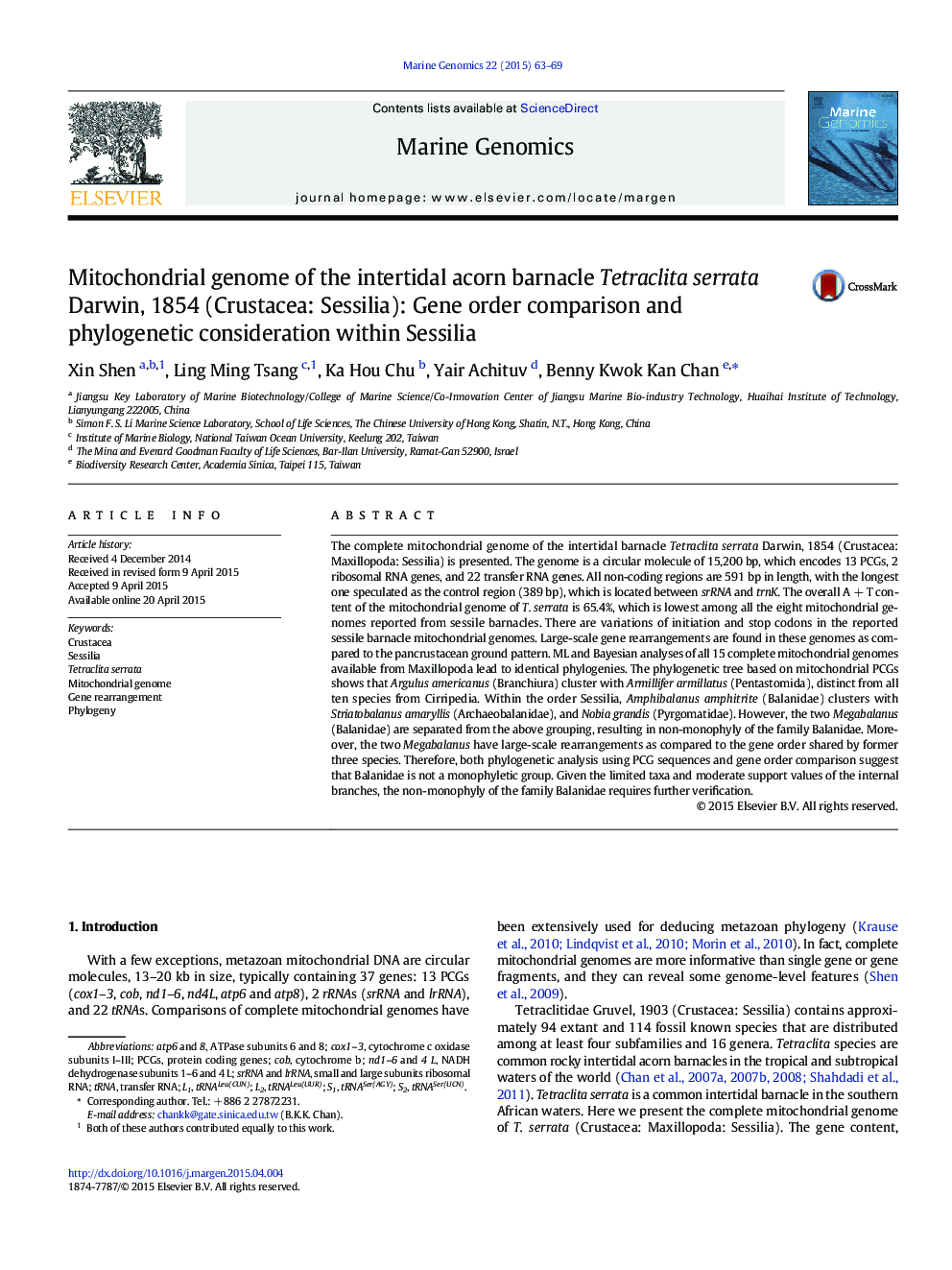| کد مقاله | کد نشریه | سال انتشار | مقاله انگلیسی | نسخه تمام متن |
|---|---|---|---|---|
| 2058105 | 1543927 | 2015 | 7 صفحه PDF | دانلود رایگان |

The complete mitochondrial genome of the intertidal barnacle Tetraclita serrata Darwin, 1854 (Crustacea: Maxillopoda: Sessilia) is presented. The genome is a circular molecule of 15,200 bp, which encodes 13 PCGs, 2 ribosomal RNA genes, and 22 transfer RNA genes. All non-coding regions are 591 bp in length, with the longest one speculated as the control region (389 bp), which is located between srRNA and trnK. The overall A + T content of the mitochondrial genome of T. serrata is 65.4%, which is lowest among all the eight mitochondrial genomes reported from sessile barnacles. There are variations of initiation and stop codons in the reported sessile barnacle mitochondrial genomes. Large-scale gene rearrangements are found in these genomes as compared to the pancrustacean ground pattern. ML and Bayesian analyses of all 15 complete mitochondrial genomes available from Maxillopoda lead to identical phylogenies. The phylogenetic tree based on mitochondrial PCGs shows that Argulus americanus (Branchiura) cluster with Armillifer armillatus (Pentastomida), distinct from all ten species from Cirripedia. Within the order Sessilia, Amphibalanus amphitrite (Balanidae) clusters with Striatobalanus amaryllis (Archaeobalanidae), and Nobia grandis (Pyrgomatidae). However, the two Megabalanus (Balanidae) are separated from the above grouping, resulting in non-monophyly of the family Balanidae. Moreover, the two Megabalanus have large-scale rearrangements as compared to the gene order shared by former three species. Therefore, both phylogenetic analysis using PCG sequences and gene order comparison suggest that Balanidae is not a monophyletic group. Given the limited taxa and moderate support values of the internal branches, the non-monophyly of the family Balanidae requires further verification.
Journal: Marine Genomics - Volume 22, August 2015, Pages 63–69